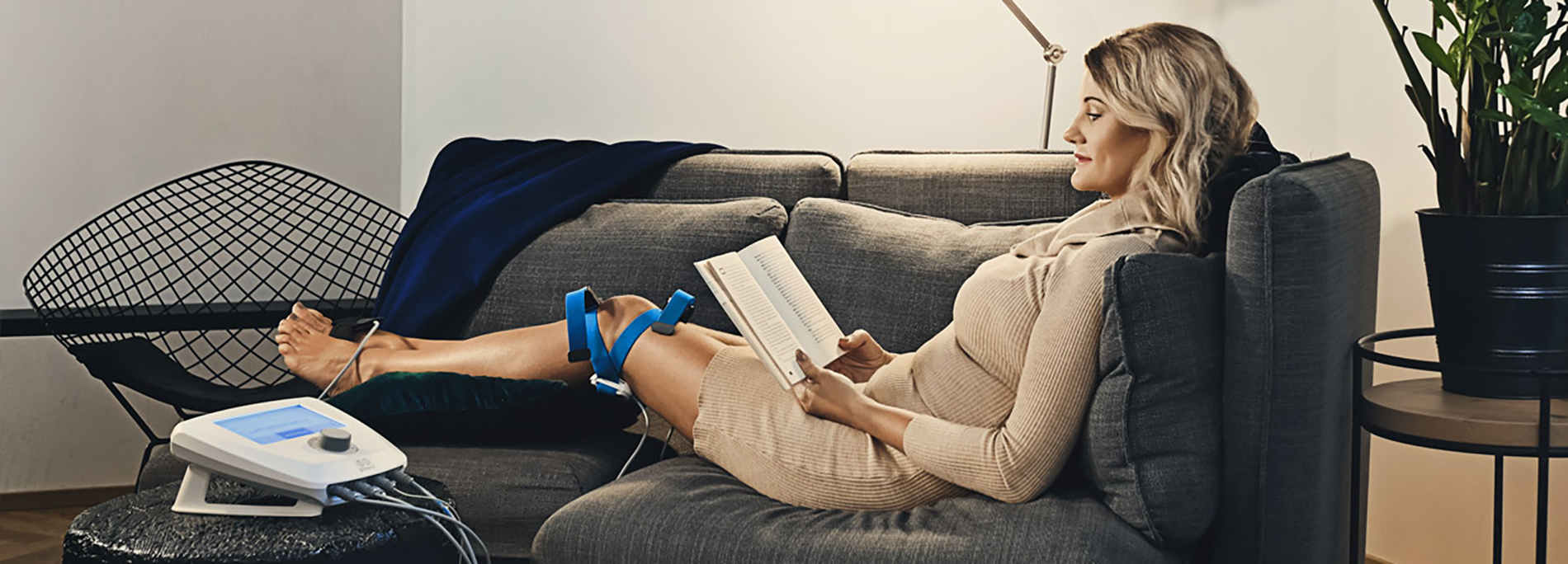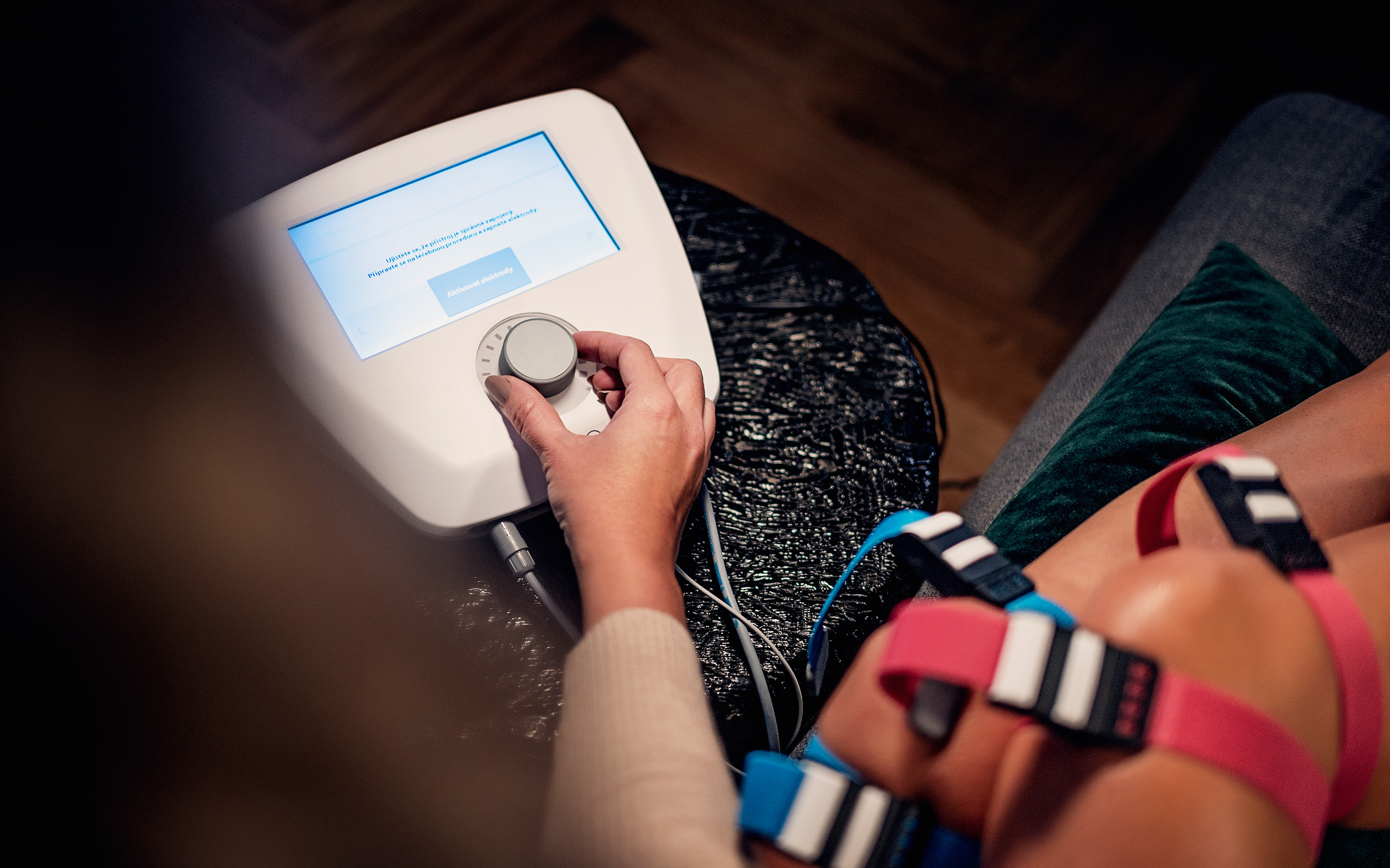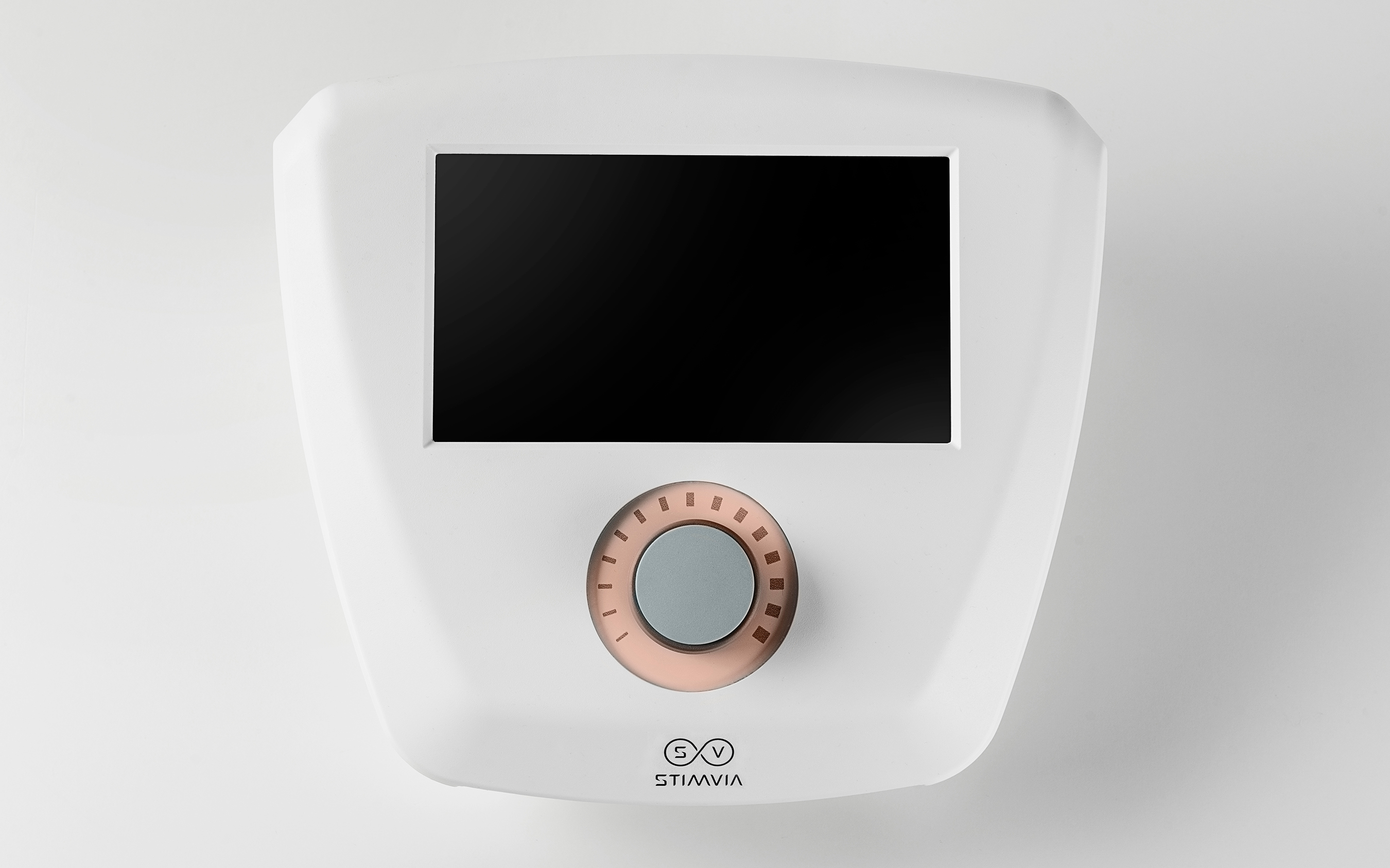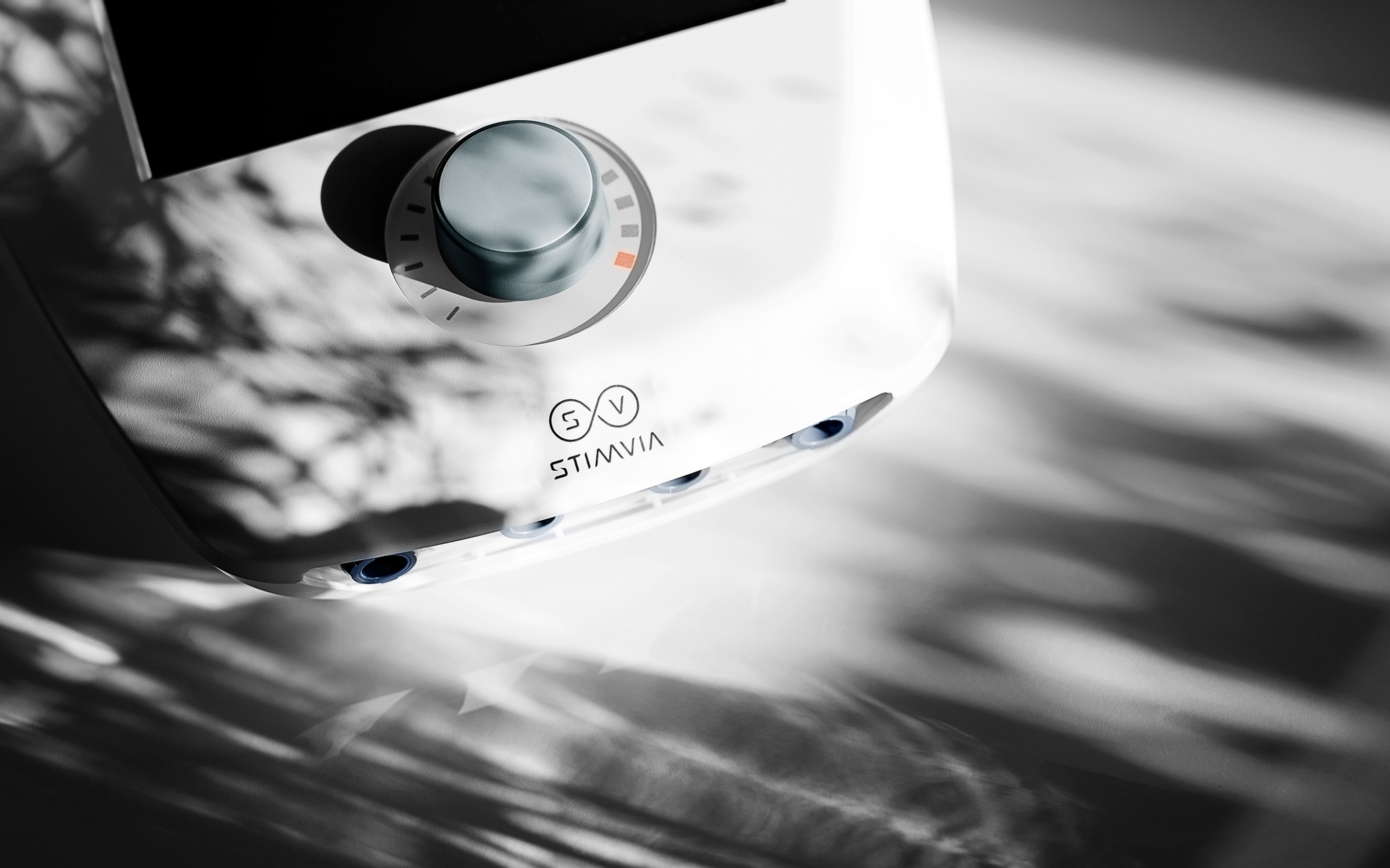
STIMVIA Announces Promising Results from Clinical Study Regarding Overactive Bladder
FrenchPrague, Czech Republic – STIMVIA a pioneer medical technology company focused on the development and commercialization of novel non-invasive neuromodulation for the treatment of lower urinary tract and bowel dysfunction, announces the publication of the safety and efficacy results of peroneal electrical Transcutaneous NeuroModulation (Peroneal eTNM®) delivered by URIS® neuromodulation system in patients with overactive bladder (OAB). The peer-reviewed publication is currently available online and the print article is scheduled to be published in the April issue of an official journal of the American Urological Association, The Journal of Urology.
The multicenter prospective, randomized, active comparator-controlled trial of peroneal electrical Transcutaneous NeuroModulation (Peroneal eTNM®) delivered by URIS® neuromodulation system versus solifenacin in treatment of naïve patients with overactive bladder.
Gallery
 Gallery Image
Gallery Image
URIS® clinically validated neuromodulation system
URIS® is a breakthrough technology for the treatment of diseases associated with Central Nervous System disorders.
 Gallery Image
Gallery Image
URIS® clinically validated neuromodulation system
URIS® is a breakthrough technology for the treatment of diseases associated with Central Nervous System disorders.
 Gallery Image
Gallery Image
URIS® clinically validated neuromodulation system
URIS® is a breakthrough technology for the treatment of diseases associated with Central Nervous System disorders.
Stimvia is a rising medical device company currently conducting clinical trials for a novel technology that enables safe, effective and non-invasive delivery of neuromodulation treatments Tweet
The full analysis set included 72 patients (47 URIS® vs 25 solifenacin). Those patients satisfying all selection criteria at the baseline were randomized in a 2:1 ratio to receive 12 weeks of treatment with peroneal eTNM® or solifenacin 5 mg. In the trial, URIS® neuromodulation system achieved onset of efficacy at four weeks in all endpoints and statistically significant efficacy was maintained at all timepoints measured through the end of the study. URIS® neuromodulation system achieved statistical significance on EQ5D-5L utility index. Also achieved statistical significance over solifenacin on EQ5D-5L VAS. URIS® neuromodulation system demonstrated consistent efficacy, was well tolerated and showed a significantly better safety profile over solifenacin.
Key clinical results include:
Safety: The incidence of treatment-related adverse events was 11.8% and 48% in the peroneal eTNM® and solifenacin, respectively. Difference between both arms was statistically significant (p-value <0,001). There were no serious treatment-related adverse events.
- Responder rate: 87% vs. 75% of all participants in the URIS® arm vs. solifenacin arm (n=72) were considered responders at 12-weeks, defined as subjects with ≥50% reduction in the number of severe urgencies + urgency incontinence episodes (PPIUS 3+4) compared to their baseline. The responder rate of URIS® arm is the highest ever reported in OAB clinical literature
- Urge Urinary Incontinence (UUI) episodes: 75% of all participants (upper quartile) in the URIS® arm experienced a reduction of more than 81% in UUI episodes from baseline vs. 64% in the solifenacin arm.
Total, 65% vs. 56% of participants in URIS® vs. solifenacin arm have become dry, having experienced a 100% reduction in their UUI episodes.
- Quality of life:
- 11% vs. 5% were mean relative changes in the EQ5D-5L utility index among participants in the URIS® arm vs. solifenacin arm. Only participants in the URIS® arm experienced a clinically significant improvement in the EQ5D-5L utility index.
- 14% vs -1% were the mean of relative changes in the EQ5D-5L VAS among participants in the URIS® arm vs. solifenacin arm. Difference between both arms was statistically significant (p-value 0,04).
- 0,0714 was the mean improvement in EQ5D-5L utility index for therapy responders.
“The results of this study demonstrate that peroneal eTNM® using the URIS neuromodulation system is safe, well tolerated, and effective, with over 85% of patients experiencing clinically significant improvement in most bothersome OAB symptoms. Importantly, peroneal eTNM® is associated with significantly lower incidence of treatment-related adverse events compared to solifenacin,” says Prof. Jan Krhut, a key investigator in the URIS trial, a Professor of Urology at University of Ostrava and adds: “The results of this clinical trial have demonstrated that URIS® neuromodulation system could provide an important new non-invasive modality to oral treatment for patients suffering with OAB.”
“Over hundreds of millions worldwide suffer from OAB symptoms, and more than 80% of patients cannot find relief due to side effects or low effectiveness of oral pharmacotherapy. URIS® neuromodulation system is safe and effective for overactive bladder treatment associated with a considerably better benefit-risk profile over oral pharmacotherapy and significantly positive impact on patient´s Quality of Life,” says Dr. Roman V. Dvorak, Chief Medical Officer of Stimvia.
About the URIS Trial
The URIS trial was an international, prospective, randomized, an active comparator-controlled, multicenter trial evaluating the safety and efficacy of peroneal eTNM® using URIS® neuromodulation system versus solifenacin in patients with OAB symptoms, including frequent urination, sudden urge to urinate, and/or urge incontinence. A total of 77 patients were randomized in a 2:1 ratio into one of two groups for a 12-week treatment period with a four-week safety follow-up period: URIS® neuromodulation system was administered once daily for 30 minutes, while Solifenacin 5 mg was administered orally once daily.
The full publication can be accessed online here (Krhut J, Rejchrt M, Slovak M, Dvorak RV, Peter L, Blok BFM, Zvara P. Prospective, Randomized, Multicenter Trial of Peroneal Electrical Transcutaneous Neuromodulation vs Solifenacin in Treatment-naïve Patients With Overactive Bladder. J Urol. 2023 Apr;209(4):734-741. doi: 10.1097/JU.0000000000003141. Epub 2022 Dec 29. PMID: 36579932).
About URIS® neuromodulation system
URIS® neuromodulation system is an innovative non-invasive neuromodulation system with active closed-loop biofeedback designed for an afferent stimulation of higher levels of the central nervous system using a novel treatment method called peroneal eTNM® via stimulation of common peroneal nerve on the lower limbs of patients for the home-based treatment of overactive bladder.
About STIMVIA
STIMVIA is a clinical-stage pioneer MedTech company focused on developing and commercializing innovative non-invasive therapies for urologic conditions. The Company’s lead product candidate, URIS® neuromodulation system, is a non-invasive electroceutical neuromodulation device for home-based therapy, 30 minutes once-daily for 12 weeks. STIMVIA previously reported positive data from the 6-weeks pilot trial using the URIS® neuromodulation system in refractory overactive bladder.
Learn more about us at www.stimvia.com.
For more information
[email protected]
Media Contact
Zuzana Kasparova
+420 773 068 497
[email protected]
